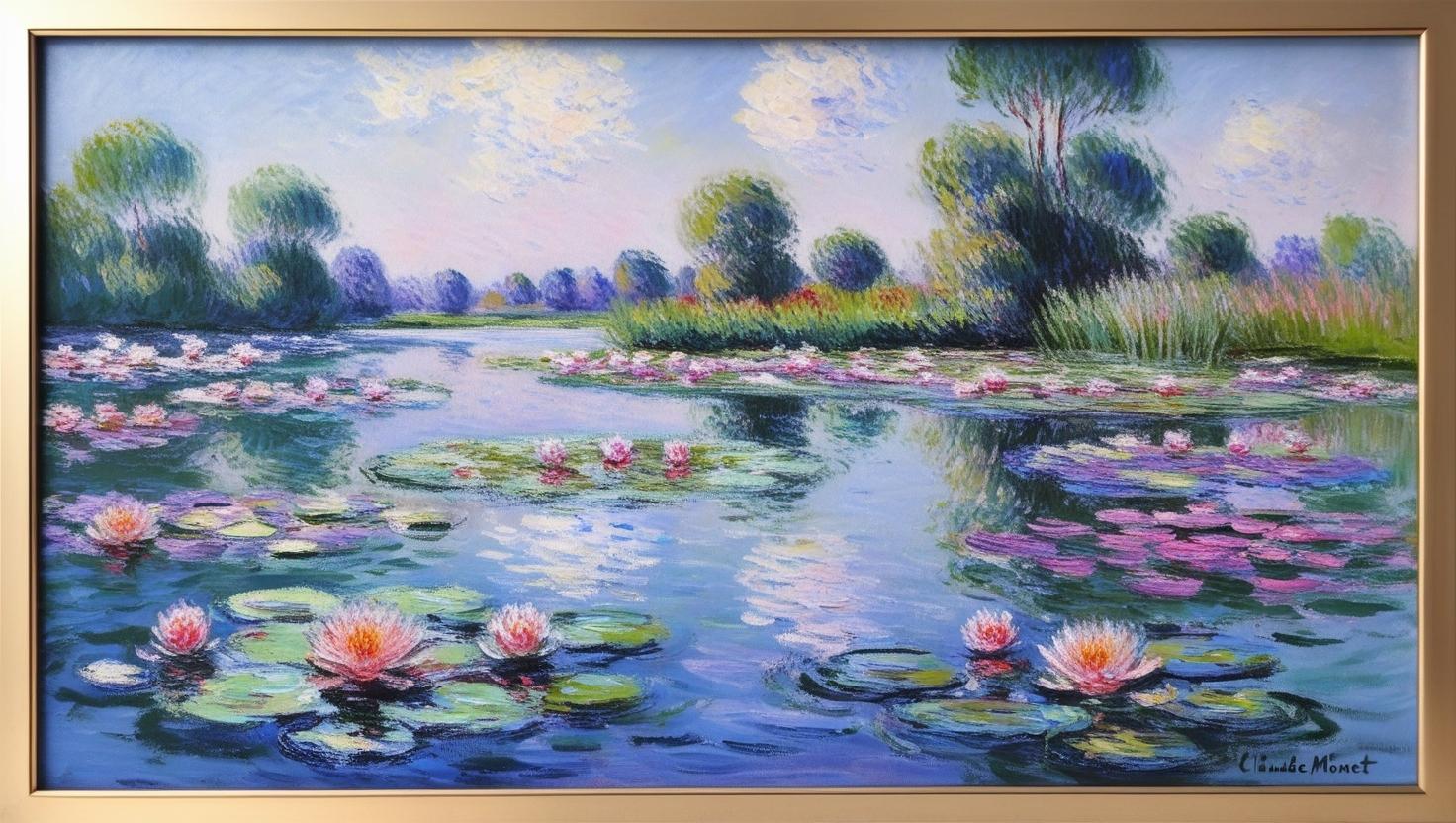Claude Monet was a famous French painter known for starting the art movement called Impressionism. He was born in 1840 in Paris and spent much of his life painting nature, landscapes, and scenes from daily life. Monet was passionate about capturing the effects of light and color, which made his paintings unique and beautiful. His work inspired many other artists and changed the way people looked at art.
What Is Impressionism?
Impressionism is an art style that focuses on how light and color change in a scene. Instead of painting every detail, Impressionist painters used quick, short brushstrokes to capture the feeling of a moment. The term “Impressionism” came from Monet’s painting Impression, Sunrise, which showed a morning scene with soft colors and visible brushstrokes. Many people at the time criticized this style, but later, it became one of the most loved art movements in history.
The Famous Series Paintings by Monet
Monet loved to paint the same subject at different times of the day or year to show how light affected it. This led to his famous series paintings.
1. Water Lilies
One of Monet’s most famous series is the Water Lilies. He painted his water garden in Giverny, where he had a pond full of floating lily pads. Monet painted these flowers under different lights, from bright afternoons to misty mornings. The paintings have soft, blended colors, making them feel peaceful and dreamy.
2. Haystacks
Monet painted haystacks in a field near his home. He showed how they changed colors in different seasons and times of day. In some paintings, they look golden in the sun, while in others, they appear purple or pink at sunset. This series proves how important light was in Monet’s work.
3. Rouen Cathedral
Monet painted the Rouen Cathedral in France many times. He focused on how the light hit the stone walls at different hours. The paintings show the cathedral glowing in the morning light, turning blue in the shadows, and becoming golden at sunset. This series helped people see buildings in a new way.
4. Houses of Parliament
During his trips to London, Monet painted the Houses of Parliament many times. He captured the thick fog over the Thames River and how it changed the colors of the sky and water. The paintings have soft blues, purples, and oranges, showing a magical side of London.
Monet’s Love for Nature
Monet loved painting outside, a technique called “plein air” painting. He believed that painting outdoors helped artists capture the true colors of nature. His paintings of gardens, rivers, and trees are full of light and movement, making viewers feel like they are standing in the scene themselves.
The Influence of Japanese Art on Monet
Monet was fascinated by Japanese art, especially woodblock prints. He collected many of them and even designed his garden in Giverny with a Japanese bridge and water lilies. This influence is seen in his Japanese Bridge paintings, where curved bridges and peaceful ponds create a dreamy atmosphere.
The Large Scale of Monet’s Later Paintings
In his later years, Monet painted huge canvases, some as wide as a whole wall. His Water Lilies series became larger and more abstract, as he focused on light and reflection rather than clear details. Some of these paintings are displayed in special circular rooms in museums, making visitors feel surrounded by the peaceful water scenes.
Monet’s Struggles with Vision
As Monet grew older, he developed cataracts, which affected his eyesight. His paintings became darker and more red-toned because he had trouble seeing certain colors. After surgery, he regained some vision, and his paintings returned to their bright, soft colors.
The Impact of Monet’s Work on Art
Monet’s paintings changed the world of art forever. Before Impressionism, most artists painted in a realistic style, but Monet showed that light, color, and emotion were just as important. His work influenced many later art movements, including Modern Art and Abstract Painting.
Where to See Monet’s Paintings Today
Many of Monet’s masterpieces are displayed in museums around the world. Some of the best places to see his work include:
- The Musée d’Orsay in Paris, France
- The Louvre Museum in Paris, France
- The Metropolitan Museum of Art in New York, USA
- The Art Institute of Chicago in the USA
- The National Gallery in London, UK
- The Orangerie Museum in Paris, where large Water Lilies paintings are displayed in circular rooms
Why Monet’s Paintings Are Still Popular
Monet’s paintings continue to inspire people today. His use of light, color, and emotion makes his work timeless. Whether it is the peaceful Water Lilies, the glowing Haystacks, or the misty Houses of Parliament, Monet’s art captures moments of beauty that people still admire.
His paintings remind us to see the world in a different way, appreciating the small changes in light and color around us. They show that art does not need to be perfect or detailed to be beautiful. Instead, it should capture a feeling, a moment, and the beauty of the world as seen through the artist’s eyes.
